In recent years, Thailand has emerged as the region’s most active spa destination, breaking a new frontier as the hub of all things holistic. With new spa treatments migrating to Asia’s spa capital from regions near and far, Thailand has come to be known as Spa Capital of Asia – a one-stop destination for any type of international spa treatment you can imagine, ranging from traditional folk techniques to cutting-edge technology.
Nevertheless, spa aficionados and holistic wellness seekers who travel to Thailand are equally keen to experience the home-grown, native Thai spa therapies and treatments unique to Thailand that they would not find so easily elsewhere.
Thai spas are considered the finest in the world. The mere mention of a Thai-style spa leaves international spa visitors intrigued. What makes a spa uniquely Thai?

Regardless of the presentation or packaging, it’s the authenticity of traditional Thai treatments such as Thai massage, Thai herbal steam, Thai herbal compress and indigenous herbal ingredients that constitute the real Thainess in the Thai spa experience. What many visitors may not realise is that the core of the Thai spa identity, and consequently the feel-good factor of Thai-style spa treatments, comes from their origins as ancient Siamese health and beauty therapies in healing traditions that have been practised by local people for centuries.
Traditional Massage for Healing
The most famous and popular spa therapy is traditional Thai massage. Also known as ‘massage for healing’, it is an age-old healing art that originated as a spiritual practice taken from the teachings of the Lord Buddha.

Massage was originally taught and practised only in temples. Even today, the most important massage school in Thailand is located at Bangkok’s famous Wat Pho – the Temple of the Reclining Buddha, or Wat Phra Chetuphon Vimolmangklararm Rajwaramahaviharn, as it is officially known.
The temple was constructed in the reign of King Rama III to serve as a cradle of education for his people. Its walls have murals and a total of 1,360 inscriptions covering a wide range of traditional Thai knowledge, ranging from literature to health. These include numerous inscriptions on traditional massage and herbal healing practices.
On 31 March 2008, the temple inscriptions were given a historic certification by UNESCO, and were recognized as a Memory of the World documentary heritage. This knowledge has been used to create various courses at the Wat Pho Traditional Medical and Massage School, the country’s first traditional massage school, which was opened in 1955. Since then the school has expanded with four other branches, including one in Chiang Mai in northern Thailand. Over 200,000 Thais and over 80,000 foreign students have graduated from these schools so far.
Like many ancient Asian healing philosophies, Thai massage techniques are based on the concept of energy and the invisible energy lines running along our bodies. Thai massage focuses on ten key energy lines in our bodies and uses pressure techniques to release the blocked energy along those lines. The ancient massage techniques gained popularity for their healing abilities, relieving ailments such as backaches, headaches, nervous tension and fevers.
Aside from releasing blocked energy, there’s a spiritual element to Thai massage as well. Thai massage philosophy is based on the idea that when giving a massage, the masseur or masseuse is practicing the physical application of metta, or ‘loving kindness’, in Theravada Buddhism, the national religion of Thailand. The massage is in effect healing the recipient by conveying love through the hands of the giver. Originally, there were rites that preceded the giving of a Thai massage. These begin with a prayer to centre the mind in a meditative mood for the healing process that is about to be performed. True massage is performed in a state of mindful awareness and concentration. This meditative awareness gives the massage giver the power to sense the energy flow and blockages in the recipient’s body, thus enabling him or her to heal the ailing parts of the body. It may seem that giving a Thai massage requires a huge amount of physical exertion, what with all the straddling and bending and flipping and twisting the clients, but when done properly, the massage giver should feel as relaxed as the recipient. Thai massage is supposed to be an act of spiritual giving that nourishes both parties involved.
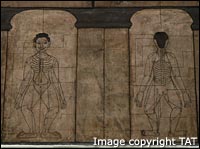
Thai Herbal Therapies
The power of the traditional Thai treatments comes from the demonstrable curative properties of plants. It was not just ancient healers, but local folk who knew that certain herbs, roots and flowers had specific abilities to rejuvenate the body and nourish the skin and hair. The herbs used in Thai health and beauty treatments have beneficial effects on the body both inside and out – for example, the same herbs used in the famous tom yum soup are also used as ingredients in typical Thai beauty treatments, thus nourishing the body from both inside and out.
Some of the most effective Thai herbal remedies are common ingredients in Thai cuisine, and are easily found in any household refrigerator, local supermarket, or plucked from the garden.
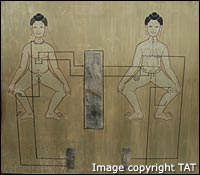
Lemongrass
This famous indigenous herb is synonymous with Thai food and gives the zesty lemony scent that often greets visitors upon stepping into a Thai spa. It is easily found in any Thai supermarket and is very inexpensive. Lemongrass is a traditional remedy for skin irritations and in olden days was burned as a cleansing agent. As aromatherapy oil, it is useful for treating headaches and as an insect repellent. In spa treatments, it is used in herbal steam and herbal compresses, and when used in aromatherapy oil massage, it helps boost circulation and speed up healing.
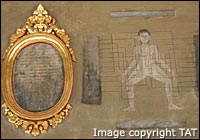
Turmeric
This rhizome is member of the ginger family and is easily recognized by its bright orange-coloured flesh. It is easily found in any supermarket because it’s a popular and flavoursome ingredient in Thai curries. Turmeric is one of the key ingredients in traditional Thai herbal treatments, and you’ll find a wide variety of herbal soaps and skin products made of this miracle root, which is known for its antiseptic properties and ability to heal skin ailments. It is used powdered and crushed in skin healing concoctions.
Prai
Another relative of the ginger family, prai looks like bigger and more bulbous version of ginger. It’s recognizable by its bitter, soil-like smell. Prai has long been used in traditional Thai body treatments as an ingredient in hot compresses to relieve muscular aches and pains. As a beauty product, it’s been used by generations of Thai women as a natural moisturizer to tone and soften the skin. Prai oil is also used as a traditional scalp conditioner.
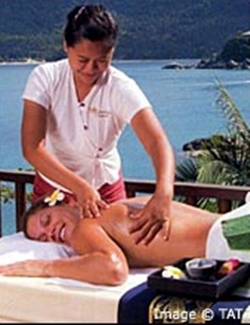
Galangal
This rhizome is often mistaken for ginger, but can be distinguished by its whitish color with a pinkish tinge on the ends. It is a popular ingredient that gives certain Thai soups and curries their familiar tangy aroma. It was used traditionally to cure skin diseases and is now used in spa treatments as an ingredient in body wraps to soothe and nourish the skin.
Kaffir Lime
This bumpy green lime is a familiar ingredient in Thai cuisine and is easily found in any Thai supermarket. Its fragrant leaves add a distinctive lemony aroma to many Thai soups and curries. While the fruit itself is inedible, its juice and oil from the peel have been used as a natural hair and scalp treatment for centuries. It is still a popular ingredient in modern day shampoos to give hair a silky shine.
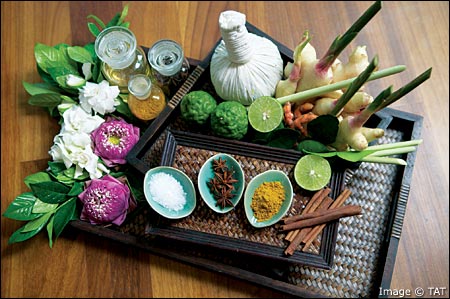
Thai Heat-based Therapies
In heat-based therapies, such as herbal sauna, herbal steam and heated herbal compresses (also commonly referred to as ‘herb balls’ or luuk prakob), heat acts as the catalyst. Practitioners of old knew that heat applied to the body helped relax the muscles as well as prepare the skin for treatment. For example, the use of steam and sauna opens the pores and softens the skin, enabling the skin to easily absorb the therapeutic properties of herbs.

While Thai spas have many unique aspects, perhaps the most unique and appealing aspect of Thai spa treatments is the charming natural warmth, gentle touch and graceful hospitality of the Thai people who administer the treatments. The most striking aspect of Thai spas that visitors cannot find in any other country is the famous Thai smile and the cheerful friendliness that is intrinsic in Thai culture. The warmth of the Thai touch adds that extra dimension to the Thai spa experience, and makes it stand out from others in the region.

With their ancient heritage of healing, spirituality and indigenous herbal ingredients, Thai spa therapies offer more than just superficial pampering treatments – they are a living manifestation of the country’s rich and ancient cultural and spiritual heritage, keeping the ancient traditions alive and relevant in contemporary modern life.
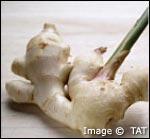
ABOUT THE AUTHOR
Chami Jotisalikorn is the author of The Thai Spa Book; Thailand’s Luxury Spas; and Thailand Chic (luxury travel guide), among many other books on Asian style, design, travel, and culture. Her books are sold worldwide in 6 languages and on amazon.com. She is a judge for the AsiaSpa Awards (Hong Kong), the region’s premiere spa industry awards.
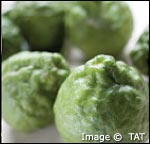
SPA LISTINGS
Areeya Spa
Web site: http://www.areeyaspa.com/
Anantara Spa
Web site: http://spa.anantara.com
AVANA Spa
Web site: http://avanahotel.com/spa.php
CT Spa Life
Web site: http://www.bangkokspa.net/
Chetawan Retreat
Web site: http://www.watpomassage.com/
Divana Clinic
Web site: http://www.divanaclinic.com/
i.sawan
Web site: http://bangkok.grand.hyatt.com/hyatt/pure/spas/index.jsp
Le Spa at Pullman
Web site: http://www.pullmanbangkokkingpower.com
Panpuri Organic Spa
Web site: http://www.panpuriorganicspa.com
Phothalai Spa
Web site: http://www.phothalai.com
Massira Wellness & Spa
Web site: http://www.massiraspa.com
RarinJinda Wellness Spa
Web site: http://www.rarinjinda.com
Ravindra Beach Resort & Spa
Web site: http://www.ravindraresort.com
Samsara Wellness
Web site: http://www.bangkokdetox.com
Sivara Spa
Web site: http://www.amari.com/emeraldcove/sivara-spa.aspx
The Oriental Spa
Web site: http://www.mandarinoriental.com/bangkok/spa/
The Barai
Web site: http://www.thebarai.com/




